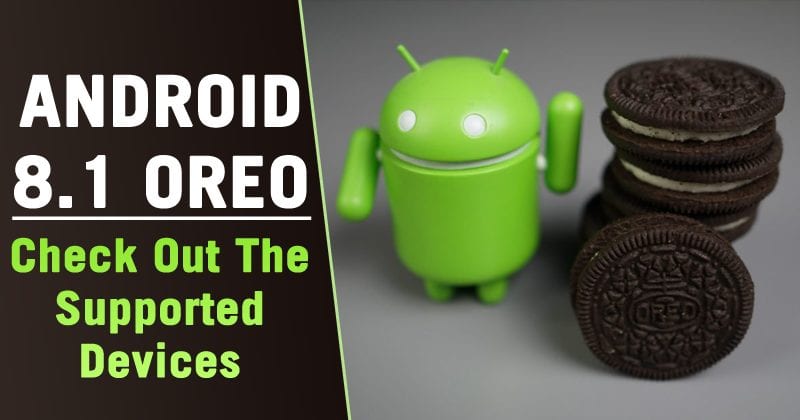The tech giant Google has officially submitted to Android 8.1 Oreo, the first major update to its mobile operating system. With the arrival of this “stable” version, improvements are introduced and, in addition, some new features that users will love. The time for speculation and development versions is over. The Mountain View presented today the first major update of its mobile operating system, which comes with some developments related, among other things, to the optimization of software for smartphones cameras. And not only that, it was also announced along with this update optimized distribution for low-end devices, Android Oreo Go Edition, which includes improving the performance of mobile phones with RAM of 1GB or less. But with regard to the higher version, Android 8.1 Oreo, the stable version comes with the enabling of the Pixel 2 visual core chip. This chip will allow third-party applications to use the HDR+ of the main camera in apps such as Instagram, WhatsApp or Facebook. In addition, the notification bar has been redesigned, the location of gestures has been changed, an API (Application Programming Interface) has been introduced to manage neural networks in the system and improvements in security to the system. Other notable improvements that we find in this update are the bug fixes, the change in the hamburger emoji, software additions such as the battery level of connected Bluetooth devices, space reduction of inactive applications and performance improvements of the batteries.
— Android (@Android) December 5, 2017 Password autocompletion is also improved; stability in the fingerprint reader support is improved; Sound failures reported in equipment such as the Pixel 2 XL and the Nexus 5X are remedied. However, let’s know in brief what’s new in Android 8.1 Oreo. After the beta versions made available, Google has now made available the Android 8.1 Oreo that is already available for smartphones of the range Pixel and Nexus.
The integration of the “Neural Network API” (NNAPI), directed to new applications and services that make use of machine learning; Improvements were also implemented in the system self-completion framework; The new Pixel 2 smartphones also support the Visual PixelCore – To improve image processing and machine learning support. For example, with support for Pixel Visual Core, you can process HDR+ images faster (up to 5x) and 1/10 of power consumption; Browsers will have more security mechanisms; It will be possible to see the battery level of devices that are connected via Bluetooth and that are connected to the smartphone; Sound problems verified on Nexus 5X, Pixel 2 and Pixel 2 XL have been fixed; Significant security improvements through fingerprint reading Fixes of hamburger emojis and beer.
Moreover, the first devices that will receive the update will be the tech giant Google’s flagship terminals. That is: the Google Pixel 2 and Pixel 2 XL, Pixel and Pixel XL of first generation, the Nexus 5X and Nexus 6P, Pixel C. These smartphones will begin in these hours to receive the new version, while there is no detail yet on when the rest of the manufacturers will deploy Android 8.1 Oreo on their smartphones. So, what do you think about this? Simply share your views and thoughts in the comment section below.


